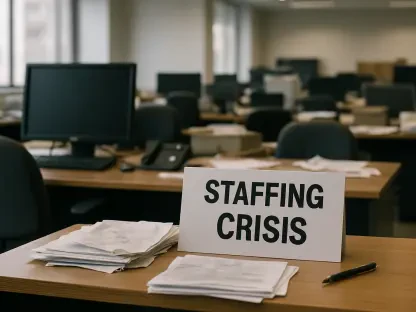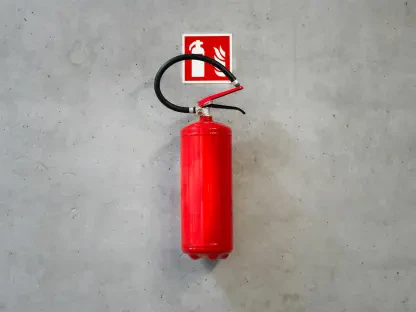Proactive planning is a game-changer in workers’ compensation. Before injuries occur, establishing a robust framework rooted in prevention and preparation lays the foundation for success. Organizations that focus on fostering a safety culture, equipping employees with knowledge, and implementing structured programs not only reduce risks but also build trust and resilience within their teams. In this article, we simplify the work and process with actionable steps for creating a strong pre-injury foundation. Each section includes practical guidance to help organizations enhance safety, streamline processes, and support employees effectively.
1. Establishing a Safety-Oriented Culture
Securing leadership dedication to safety is the first crucial step in establishing a safety-oriented culture. When leaders prioritize and actively participate in safety practices, it sets a powerful example for employees at all levels. Engaging employees through regular feedback sessions and involvement in safety initiatives is equally important. By involving workers in the creation and implementation of safety protocols, organizations can ensure that policies are relevant, practical, and well-received. Offering regular, impactful safety education tailored to specific job roles enables staff to identify potential hazards and respond appropriately.
Acknowledging and rewarding safe behavior fosters a positive safety culture and encourages continuous improvement. Recognizing employees who adhere to safety measures and contribute to a secure work environment motivates others to follow suit. Regular safety culture evaluations help track progress and identify areas needing enhancement. These evaluations can be conducted through surveys, observations, and feedback mechanisms, ensuring a comprehensive understanding of the safety climate within the organization.
2. Implementing a Thorough Safety Program
Conducting regular risk evaluations and hazard identification is a fundamental aspect of a thorough safety program. By identifying potential risks and hazards in the workplace, organizations can proactively address issues before they lead to accidents or injuries. Setting up and enforcing safe work practices is another critical component. Ensuring that employees follow established safety protocols and guidelines helps maintain a secure working environment. Developing emergency readiness protocols, including evacuation plans and first-aid procedures, prepares employees to respond effectively to crises.
Additionally, ergonomic evaluations are vital to identifying areas where adjustments can reduce strain and prevent injuries. Providing adjustable workstations and tools tailored to individual needs promotes comfort and efficiency. Creating a Safety Program Implementation Checklist ensures that all necessary elements are addressed systematically, allowing organizations to monitor progress and make necessary adjustments.
3. Training and Development
Training and development are essential for equipping employees with the knowledge and skills needed to maintain a safe work environment. Customizing training to job-specific risks ensures relevance and effectiveness. Engaging, interactive methods such as scenarios and hands-on activities make training sessions more memorable and impactful. Regularly updating and refreshing training materials ensures that information remains current and applicable, keeping employees informed about the latest safety standards and practices.
Promoting a culture of awareness through visual reminders and team accountability encourages ongoing vigilance. Visual cues, such as posters and signage, serve as constant reminders of safe practices. Team accountability fosters a sense of collective responsibility, where employees watch out for one another’s safety. Assessing training effectiveness through evaluations and surveys helps organizations identify areas needing improvement and ensures continuous enhancement of safety training programs.
4. Creating an Injury Prevention Plan
Conducting comprehensive risk evaluations is the first step in creating an injury prevention plan. By thoroughly assessing potential hazards, organizations can develop targeted prevention strategies to mitigate risks. Setting clear, measurable safety goals provides direction and ensures that efforts are aligned with organizational objectives. Implementing targeted prevention techniques, such as engineering controls and personal protective equipment (PPE), addresses specific risks and reduces the likelihood of accidents.
Promoting a culture of prevention through leadership and employee engagement encourages proactive safety practices. Leaders who prioritize safety inspire employees to do the same, fostering a collective commitment to injury prevention. Developing a Post-Injury Response Guide equips the organization with a structured approach to managing injuries when they occur, ensuring prompt and effective intervention.
5. Improving Ergonomics
Conducting ergonomic evaluations for all roles is essential for identifying areas where improvements can reduce strain and prevent injuries. Providing adjustable workstations and tools tailored to individual needs promotes comfort and efficiency. Training employees on proper body mechanics helps them adopt safe practices that minimize the risk of musculoskeletal injuries. Regular monitoring and assessment of ergonomic adjustments ensure their continued effectiveness and identify areas needing further modification.
Developing an Ergonomic Improvement Plan for both remote and in-office employees ensures that ergonomic principles are applied consistently across different work environments. This plan should include guidelines for setting up ergonomic workspaces, recommendations for equipment, and best practices for maintaining good posture and body mechanics. By prioritizing ergonomics, organizations can enhance employee well-being and productivity.
6. Establishing a Return-to-Work (RTW) Culture
Setting expectations for modified duties before injuries occur helps create a supportive return-to-work culture. Establishing pre-defined roles for light-duty assignments ensures that injured employees can continue to contribute while recovering. Encouraging open communication and regular check-ins with injured employees fosters a sense of support and facilitates smoother recoveries. Training supervisors to support RTW initiatives equips them with the skills to manage the return-to-work process effectively and empathetically.
Creating an RTW Plan Template provides a structured approach to managing the return-to-work process. This template should include guidelines for assessing an employee’s ability to return to work, evaluating suitable modified duties, and monitoring progress. By fostering a culture that prioritizes smooth and supportive transitions back to work, organizations can reduce recovery times, enhance employee morale, and minimize costs associated with prolonged absences.
7. Emergency Preparedness and Incident Response
Conducting risk evaluations for potential emergencies is crucial for understanding the specific threats that an organization may face. Developing and regularly updating an Emergency Action Plan (EAP) ensures that the organization is prepared to respond effectively to various emergencies. Training employees through drills and simulations helps them become familiar with emergency procedures and build confidence in their ability to respond appropriately.
Establishing reliable communication systems for emergencies is vital for coordinating responses and disseminating information quickly. Creating an Incident Response Playbook provides a comprehensive guide for managing different types of incidents, ensuring that all necessary steps are taken to mitigate risks and protect employees. By prioritizing emergency preparedness, organizations can reduce chaos, enhance coordination, and ensure effective responses to emergencies.
8. Choosing a Claims Partner
Assessing claims partners for expertise, technology, and an employee-centered approach is essential for effective claims management. Evaluating potential partners based on their track record, technological capabilities, and commitment to employee well-being ensures a good fit with organizational values. Establishing clear metrics for performance and accountability helps organizations monitor the claims partner’s effectiveness and make necessary adjustments.
Fostering a collaborative relationship with regular check-ins and feedback promotes continuous improvement and ensures that the claims partner meets organizational needs. Including employee input in evaluating claims partner performance ensures that the chosen partner aligns with employee expectations and enhances their experience. Drafting a Claims Partner Evaluation Guide provides a structured approach for assessing potential partners, ensuring a thorough and objective evaluation process.
9. Creating a Supportive Claims Management Process
Communicating transparently and consistently with injured workers builds trust and reduces anxiety. Clear, ongoing communication ensures that employees are informed about their claims status, available support, and next steps. Demonstrating empathy at every interaction fosters a positive relationship and helps alleviate stress for injured workers. Streamlining claims handling through technology and efficient processes reduces delays and ensures smooth, consistent management of claims.
Maintaining accurate and comprehensive documentation is essential for effective claims management. Detailed records of communications, medical reports, and decisions help ensure transparency and accountability. Collaborating across stakeholders, including medical providers and supervisors, ensures a coordinated approach to managing claims and supporting injured employees. By prioritizing a supportive claims management process, organizations can enhance recovery outcomes, build trust, and reduce the stress associated with the claims process.
10. Documenting Pre-Injury Processes
Maintaining detailed safety policies and procedures creates a foundation for accountability and compliance. Clear documentation of safety practices ensures that all employees understand their roles and responsibilities in maintaining a safe work environment. Tracking training attendance and topics covered allows organizations to monitor participation and ensure that employees receive relevant education. Standardizing incident reporting and near-miss documentation facilitates consistent and accurate recording of safety-related events.
Regularly auditing and updating documentation practices ensures that they remain current and effective. By continuously refining documentation processes, organizations can ensure that they are well-prepared to address safety concerns and respond to incidents. Developing a Safety Documentation Manual provides a comprehensive guide for maintaining accurate records and managing documentation effectively. Detailed documentation supports a culture of accountability and enhances organizational preparedness for potential safety challenges.
11. Developing Employee Wellness Programs
Offering physical fitness and mental health initiatives supports employee well-being and reduces injury risks. Wellness programs that promote healthy lifestyles, stress management, and physical activity contribute to overall health and resilience. Integrating wellness programs into safety training ensures that employees have access to resources that support both physical and mental well-being. Gathering employee feedback helps organizations refine wellness offerings to meet the needs and preferences of their workforce.
Monitoring participation and outcomes allows organizations to measure the success of wellness programs and make necessary adjustments. By tracking engagement and evaluating program effectiveness, organizations can ensure that wellness initiatives contribute to a healthier, more productive workforce. Building a Wellness Program Calendar provides a structured approach to planning and promoting wellness activities throughout the year, encouraging consistent participation and fostering a culture of well-being.
Moving Forward
Proactive planning significantly impacts workers’ compensation. By taking steps before injuries occur, organizations can create a strong foundation rooted in prevention and readiness. Developing a comprehensive framework that prioritizes safety and equips employees with the necessary knowledge and tools is vital. Implementing structured programs contributes to reducing risks and fortifying trust and resilience among teams. This article demystifies the process with actionable steps for establishing a robust pre-injury framework. Each section contains practical advice for organizations aiming to enhance safety measures, streamline operations, and provide effective employee support. By fostering a culture of safety and preparedness, organizations not only mitigate potential hazards but also create a more resilient and cohesive work environment. Adopting these practices can lead to a significant reduction in workplace injuries, ultimately benefiting both employees and the organization as a whole.









